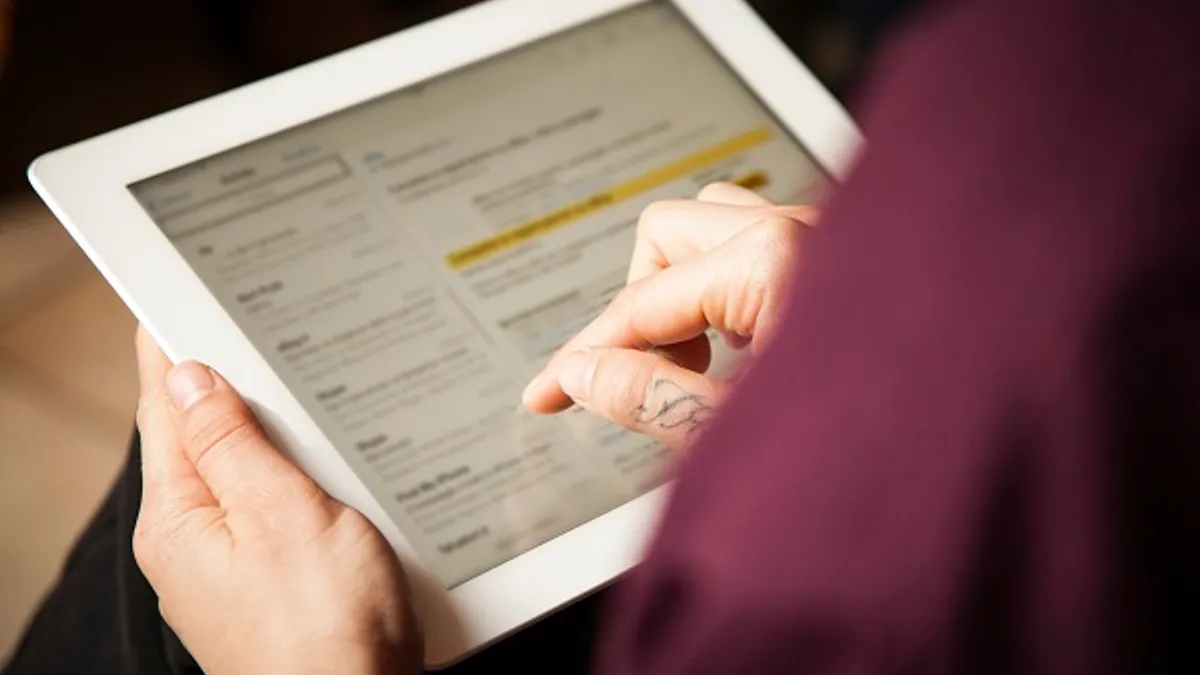One of the quickest ways to a consumer’s heart is through personalized messages. And consumers are willing to talk – provided that the brand communications they receive in return are relevant.
Aimia research from last year found that 80% of consumers are willing to share detailed personal information, such as their name, email and nationality. And an Autopilot survey discovered consumers are four times as likely to respond to messaging if they receive personalized offers.
But since mobile burst onto the scene, the medium has been a blessing and a curse, making it easier to connect with consumers, while adding another layer of complexity to personalization. Between the abundance of data available to marketers and the shift to mobile, it has become difficult to pinpoint data that captures what consumers really want from personalization.
How surveys can help marketers connect
In theory, striking up conversations via surveys with consumers has never been easier.
Nearly two-thirds of Americans own mobile devices, per 2015 data from the Pew Research Center. With consumers spending more time on their phones – on average nearly three hours per day, according to eMarketer – these devices provide a unique opportunity for marketers to engage with them.
Online survey company SurveyMonkey, which has some 25 million customers, said 40% of their traffic comes from people taking surveys on mobile.
“The best decisions start here, we say,” SurveyMonkey’s VP of Marketing Communications Bennett Porter told Marketing Dive.
As the digital revolution that first took place on the consumer Internet seeps into the business side and mobile adoption surges, Porter said surveys provide marketers an interesting opportunity to improve their communications with buyers.
To capitalize on this information-gathering means, Porter said marketers have had to adjust their old questioning methods to fit the brevity of the digital age. And because “the landscape is ever-changing,” she explained, “it’s been challenging for marketers to keep up.”
Dave Parro, partner and director of the marketing technology practice at Walker Sands, said surveys are useful for gaining market insights. For example, Parro told Marketing Dive that knowing that the buyer journey is in flux, Walker Sands used surveys to better understand the how and why behind the change, and then inform their own strategies. He also said Walker Sands recommends its clients use surveys when lead generation is the goal because it helps introduce the client to prospects and builds credibility.
“It's great for brand awareness,” he said. “We tell [clients] to think through what they're trying to accomplish or show through the survey, going back to the business goals and how the insights from the survey will help shape their services and relate to their customers.”
Still, Porter said it’s crucial for brand marketers to resist the temptation to over-survey.
Could surveys be the key to improved personalized marketing in the future?
Surveys can be used for a number of reasons like learning more about customers for improved advertising campaigns and experiences. But for brands to be successful with surveys, they have to have a clear goal in mind and provide customers with a reason to answer their questions.
“To be successful, brands must use the information that their customers are sharing with them to give them something meaningful back – whether that’s a more personalized offer or a more relevant experience – or risk being cut off for good,” Aimia Group COO David Johnston told Marketing Dive in December.
Case in point: Going into 2016, the ad industry was put on notice when ad blocking usage began to spike. To move beyond the ad blocking dilemma, industry experts told Marketing Dive in the year ahead they should prioritize using data to boost personalized communications, which would help them improve customer experience – as well as drive sales.
According to a CMO Council survey from last year, 43% of marketers said personalization led to more conversions. But despite the positive results, marketers’ personalization efforts are not meeting consumers’ expectations. Data from Forrester and SAP Hybris found that 66% of marketers say their personalization tactics are “excellent” and almost half reported using data on customer intent. But in reality, some 40% of consumers said the communications they received from brands didn’t interest them.
Surveys don't come without their downfalls
Because most surveys are conducted anonymously, it makes it difficult “to connect survey responses to specific buyers for personalization,” Gartner Research Director Jennifer Polk told Marketing Dive.
However, Polk explained that survey data is booming in use by subscription e-retailers such as BirchBox and StitchFix to tailor their product recommendations.
“Surveys can be used as a guide to personalize marketing, such as creating a hypothesis based on survey data and validating that hypothesis with a larger data set, such as behavioral data from Web analytics,” she said.
That being said, she and Parro both agree that scaling this tactic would be expensive.
Parro explained that in order to “personalize” surveys, you have to pay for qualifiers such as “millennials” or “B2B,” and when you start adding those in, the cost starts to add up.
It can sometimes be difficult to get actionable insights from the data, too. “The data may be unreliable due to gaps between what people say and what they really mean, and the time it takes to gather and interpret the data would prohibit a marketer from using it to make day-to-day decisions or to personalize marketing,” Polk explained.
But it is possible to scale this tactic.
"There are clearly benefits to using this type of data gathering technique to learn more about individual customers, not just understand audience-level data,” Polk said.






















